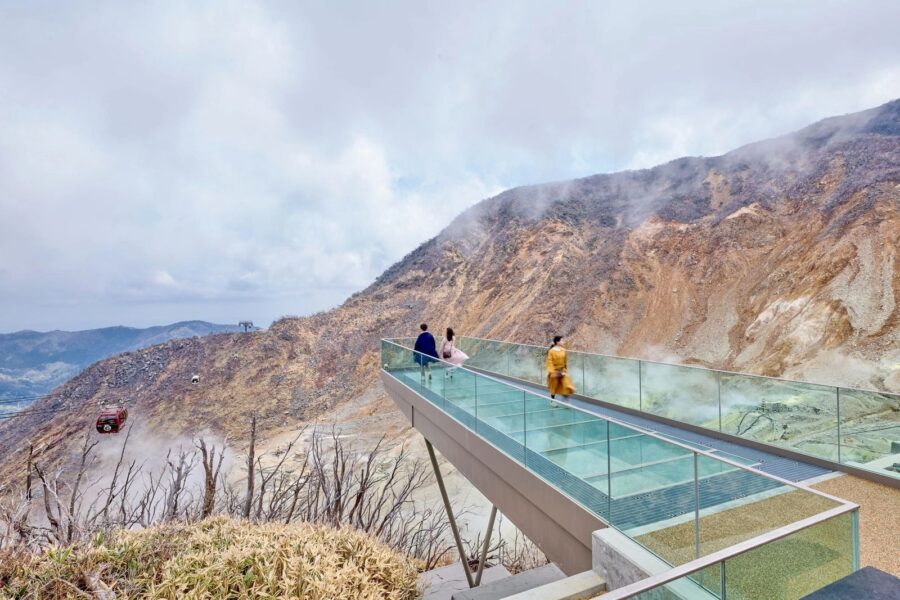このプロジェクトは、集合住宅でありながら戸建てのような住まい心地を提供することを目的としている。スペイン・バスク沿岸の美しい都市部では同じような特徴をもつ区画が密集しているため、カスタマイズできること、楽しい屋外空間をもつこと、プライバシーが要求された。
建物の素材感を決定するもう1つの重要な要素は天候である。塩硝(えんしょう)の多い湿度の高い環境はどんな素材でも短期間で劣化させる。バスク地方で有名なフリッシュの海岸で見られる地層は、年中・毎日押し寄せる波に耐える、頑丈で石のような素材である。コンクリートは適応性とカスタマイズの自由度があり、さらに強化されたアイデアとして採用した。
このような前提からプロジェクトは始まった。堅牢で硬い石のような素材によって、空間を自在につくって成形し、穴あけと押し出しを同時に行った。したがってこの作品は、この地域の区画における居住性と快適性の既存の問題を解決するために行われた容積測定の実験の結果であり、都市的に開発されている地域と同様に美しい。
プログラムの解決策としては、一連の変化・回転と、フリッシュから着想を得たボリュームのあるスライドゲームを提案した。このプランの動きによって採光が確保され、テラスを設けることが可能になった。庭のねじれは、伝統的な「花壇の庭」から家を解放し、それぞれの家が広い緑地を享受できるようにし、また日陰を避けることで実質的に1日中直射日光を保証している。また、窪みと空地が空間を区切り、以前の前提を手放すことなくプライバシーを守ることができる。
敷地と住宅と庭は縦長の配置となったことから、1階では地下とつながったL字型になり、隣人同士のプライバシーに問題が生じる可能性があった。
私たちの文化、特にバスクの文化において非常に重要なこの特徴は、コンクリート打ち放しのユニークなプランによって解決され、プライベートな緑地へと住民を導くと同時に、隣接する部屋からの視線を制限してプライバシーを確保している。
住宅のファサードと設備は、最大限のエネルギー効率を考慮した。地熱ヒートポンプを使用し、必要なエネルギーを持続的に生産することで、消費と排出をゼロにすることを目指している。(Xabier Ramos)
Low-rise apartment complex that enjoys a twisted garden while protecting privacy
Being aware that when accessing a semi-detached house, on many occasions, the characteristics of a single-family home are longed for, this project, being in truth a collective housing building, aims to provide the inhabitant with a feeling of a full single-family home. The promoters, a small cooperative of families with this common goal, required customization, enjoyable outdoor spaces, and privacy, a challenge considering the high density of urban plots with similar characteristics that agglomerate this beautiful urban area of the Basque coast.
The weather is another critical factor in deciding the materiality of the building, a humid environment full of saltpeter capable of deteriorating practically any material in a short time. The famous Flysch came to mind, which resists the continuous attack of the waves, day after day, year after year, as a robust, stony material. We could do something similar. Concrete is thought of as an idea that is reinforced by its adaptability and freedom of customization.
With these premises, the project begins, which ends up talking about the moldability of concrete to generate spaces at will, and talks about drilling and extruding, all at the same time, and all this on a robust, hard, stony material, which guarantees eternal properties. This work is, therefore, the result of volumetric experimentation using this medium to solve existing problems of habitability and comfort in the plots of this area, an area as beautiful as it is exploited urbanistically.
The solution to the program proposed a series of turns and a game of volumetric slides, also inspired by Flysch himself. The movement in the plan guaranteed the entrance of light and made possible the existence of the terraces. The twists of the gardens freed the houses from the yoke of the traditional “parter gardens,” allowing each of them to enjoy a large green space and also guaranteeing their direct sunlight practically the entire day by avoiding shading. The hollows and empties delimited the spaces to preserve privacy without having to give up any of the previous premises.
In this way, the properties, housing, and garden went from being corseted longitudinally to forming an “L” on the ground floor, coinciding in limits with the basement floor, something that could generate privacy problems among the neighbors themselves.
This feature, so important in our culture, and especially in the Basque culture, was resolved by implementing an interesting set of plans executed in exposed concrete to the hollows and empties that would guide the user towards their green areas for private use and limiting, at the same time, the views between adjoining, guaranteeing this privacy.
The configuration and equipment of the houses, facades, and installations, are aimed at achieving the maximum possible energy efficiency, reducing consumption and emissions to zero through the sustainable production of all the necessary energy, in this case through geothermal heat pumps, seeking to be, in this way and in the set of all its properties, a piece of slight impact capable of guaranteeing eternal shelter. (Xabier Ramos)
【Casas Loyola】
所在地:スペイン、ソペラ
用途:集合住宅
クライアント:Housing cooperative
竣工:2021年
設計:RAMOS BILBAO ARQUITECTOS
担当:Xabier Ramos
構造設計:CTE Estructuras
施工:Zarate eta Elexpe
撮影:Pedro Pegenaute
工事種別:新築
構造:RC造
敷地面積:1200.00m²
建築面積:813.93m²
延床面積:249.70m²
設計期間:2018.04-2018.06
施工期間:2019.06-2021.07
【Casas Loyola】
Location: Sopela, Spain
Principal use: Housing complex
Client: Housing cooperative
Completion: 2021
Architects: RAMOS BILBAO ARQUITECTOS
Design team: Xabier Ramos
Structure engineer: CTE Estructuras
Contractor: Zarate eta Elexpe
Photographs: Pedro Pegenaute
Construction type: New Building
Main structure: Reinforced Concrete construction
Site area: 1200.00m²
Building area: 813.93m²
Total floor area: 249.70m²
Design term: 2018.04-2018.06
Construction term: 2019.06-2021.07








